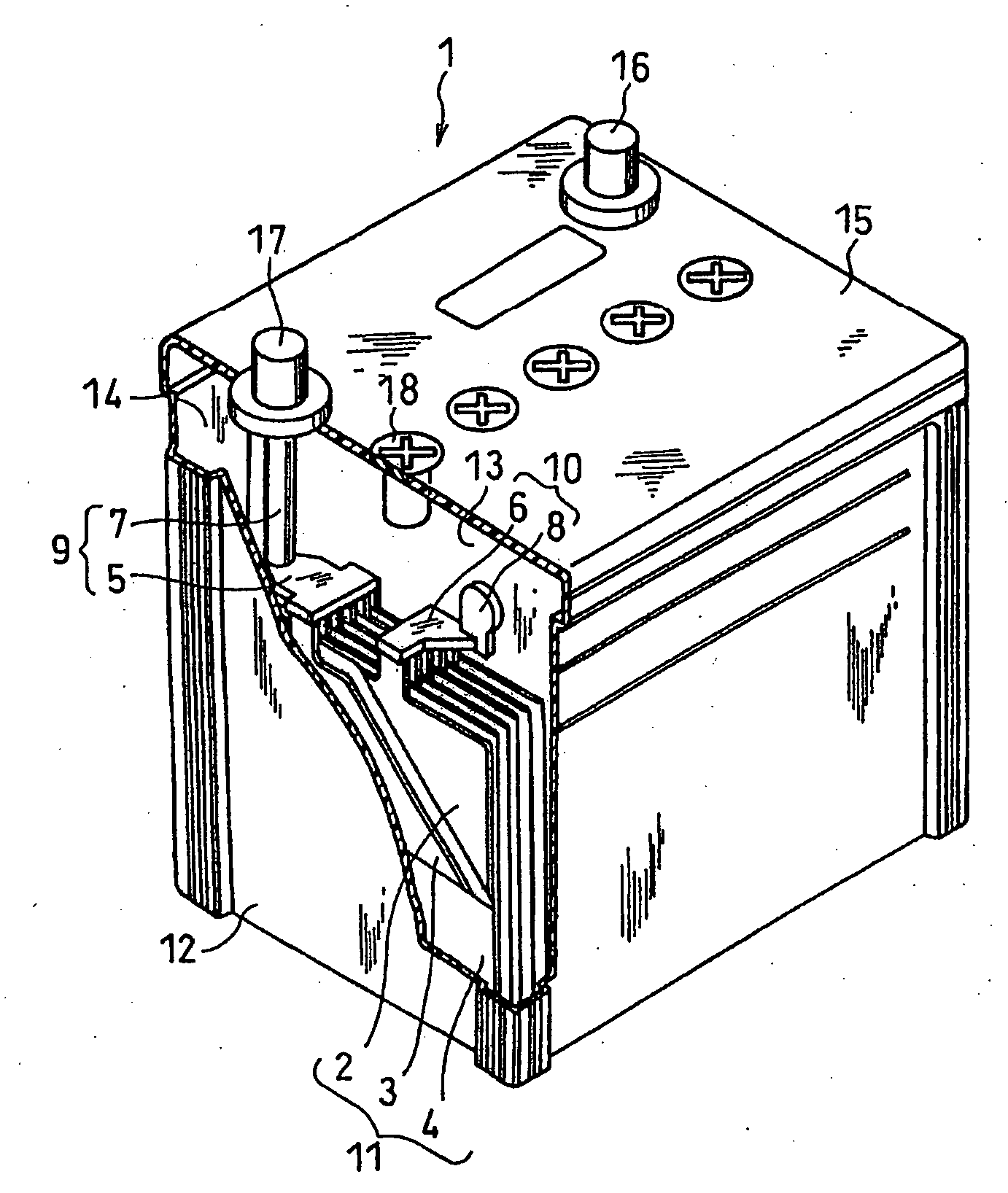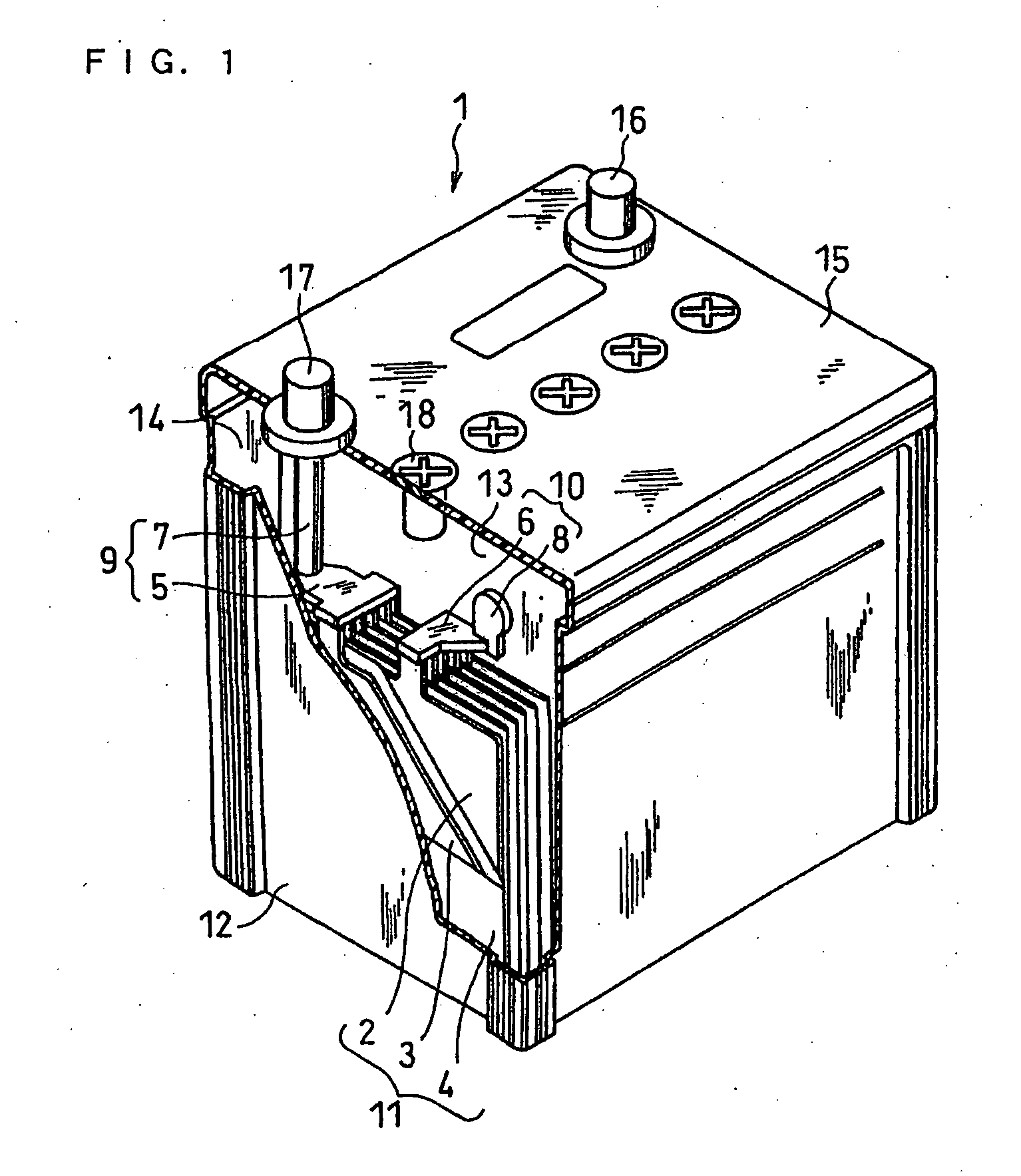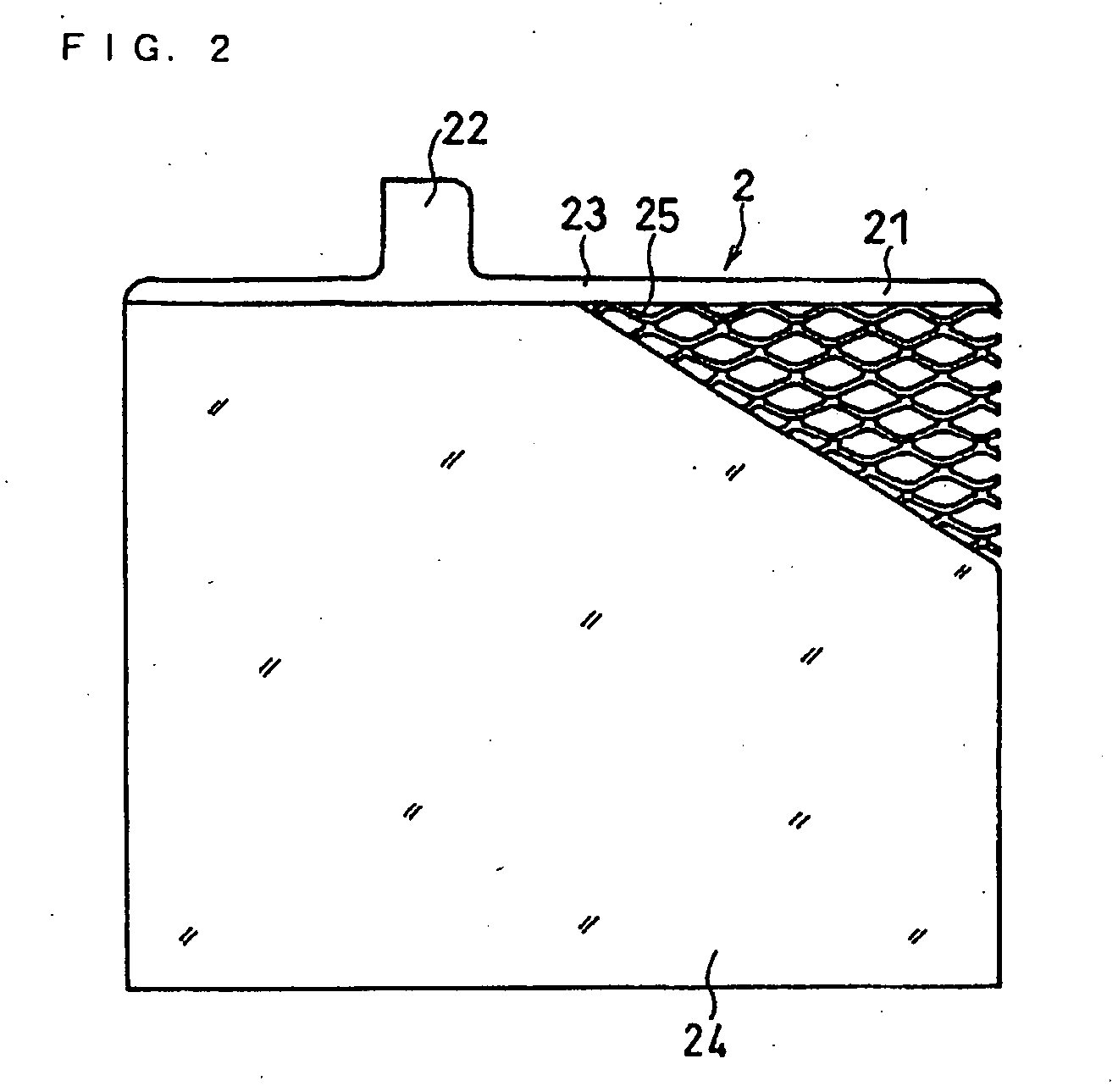Lead Storage Battery
- Summary
- Abstract
- Description
- Claims
- Application Information
AI Technical Summary
Benefits of technology
Problems solved by technology
Method used
Image
Examples
example 1
(1) Fabrication of Bag-shaped Separator
[0097]To polyethylene with an average molecular weight of 8000000, silica particles, a mineral oil (Daphne Oil CP, manufactured by Idemitsu Kosan Co., Ltd.), and carbon powder were added and then kneaded. After molding the kneaded matter by extrusion, the mineral oil was removed by a solvent such as hexane, to obtain a polyethylene sheet including silica particles, having fine pores of a pore diameter of not more than 1 μm, and having a thickness of 0.3 mm. The polyethylene sheet thus obtained was folded to two, and a bag-shaped separator with an opening only on an upper part was obtained by welding a left end side and a right end side of the folded sheet with heat.
[0098]For the silica particles, porous particles (a particle diameter: 5 to 40 μm) having fine pores with an average pore diameter of not more than 20 μm were used.
(2) Fabrication of Positive Electrode Plate
[0099]A positive electrode plate 2 shown in FIG. 2 was made as in the followi...
example 2
[0134]A glass fiber mat with a thickness of 1.0 mm retaining silica particles was obtained by papermaking process of a glass fiber in an acidic aqueous solution in which silica particles were dispersed. Then, the obtained glass fiber mat was folded to two, and a bag-shaped separator with an opening only on top was made by welding a left end part and a right end part by heating. At this time, the silica particle content in the separator comprising the glass fiber mat retaining the silica particles was set to become 0% by mass, 5% by mass, 10% by mass, 40% by mass, and 50% by mass. For the silica particles, the same silica particles as in Example 1 were used.
[0135]As shown in Tables 3 and 4, batteries K1 to K5, L1 to L5, M1 to M5, N1 to N5, O1 to O5, P1 to P5, Q1 to Q5, R1 to R5, S1 to S5, and T1 to T5 were made in the same manner as in Example 1, by combining the separators comprising the glass fiber mat retaining the silica particles with different silica particle contents, the nega...
example 3
[0146]As shown in FIG. 5, a lead alloy foil 27a was supplied with a base material sheet 27 in between a pair of rollers 45, and the base material sheet 27 and the lead alloy foil 27a were simultaneously pressed by the rollers, in a pressing step of a positive electrode grid fabrication. By this pressing process, the lead alloy foil 27a was attached onto the base material sheet 27, and a composite sheet having a lead alloy layer with a thickness of 20 μm on one side of the base material sheet with a thickness of 1.1 mm was obtained. A Pb alloy containing 5.0% by mass of Sn was used for the lead alloy foil 27a. The same positive electrode grid as in Example 1 was used for the base material sheet 27.
[0147]For the part of the base material sheet 27 where the lead alloy foil 27a is to be pressed onto, only a part where an expanded mesh and a frame are to be formed in an expanding process mentioned later was pressed, and the lead alloy foil was not pressed onto a center part of the base m...
PUM
 Login to View More
Login to View More Abstract
Description
Claims
Application Information
 Login to View More
Login to View More - R&D
- Intellectual Property
- Life Sciences
- Materials
- Tech Scout
- Unparalleled Data Quality
- Higher Quality Content
- 60% Fewer Hallucinations
Browse by: Latest US Patents, China's latest patents, Technical Efficacy Thesaurus, Application Domain, Technology Topic, Popular Technical Reports.
© 2025 PatSnap. All rights reserved.Legal|Privacy policy|Modern Slavery Act Transparency Statement|Sitemap|About US| Contact US: help@patsnap.com



